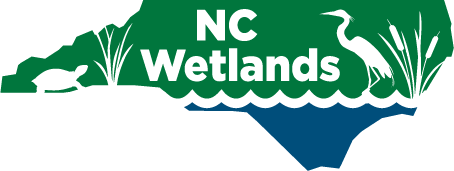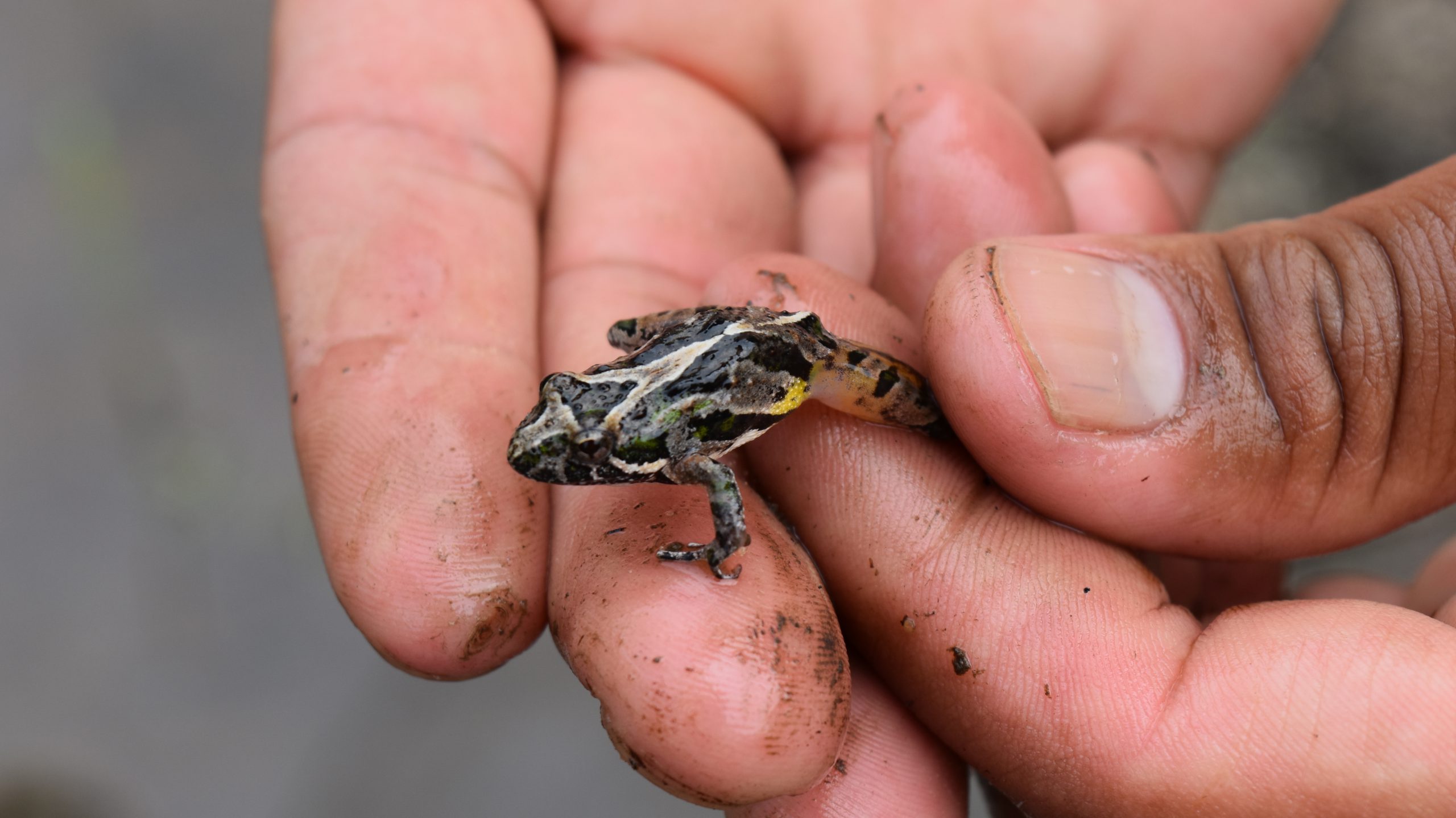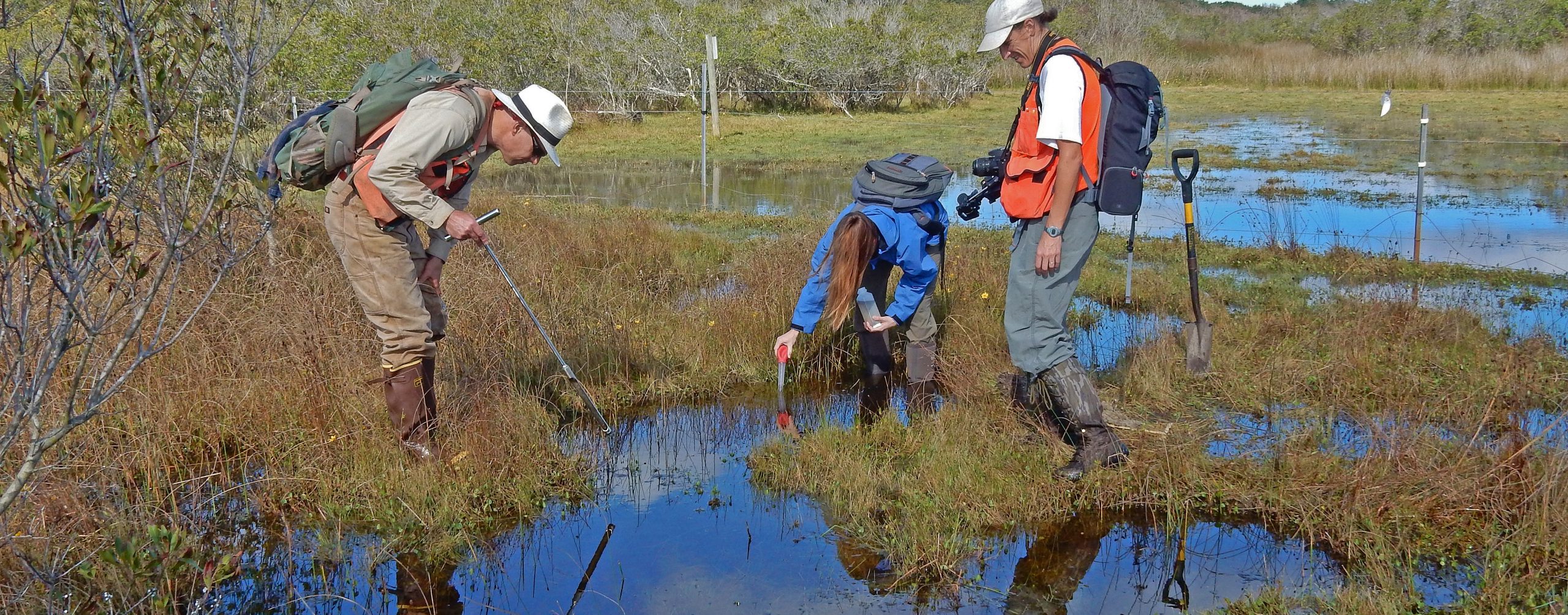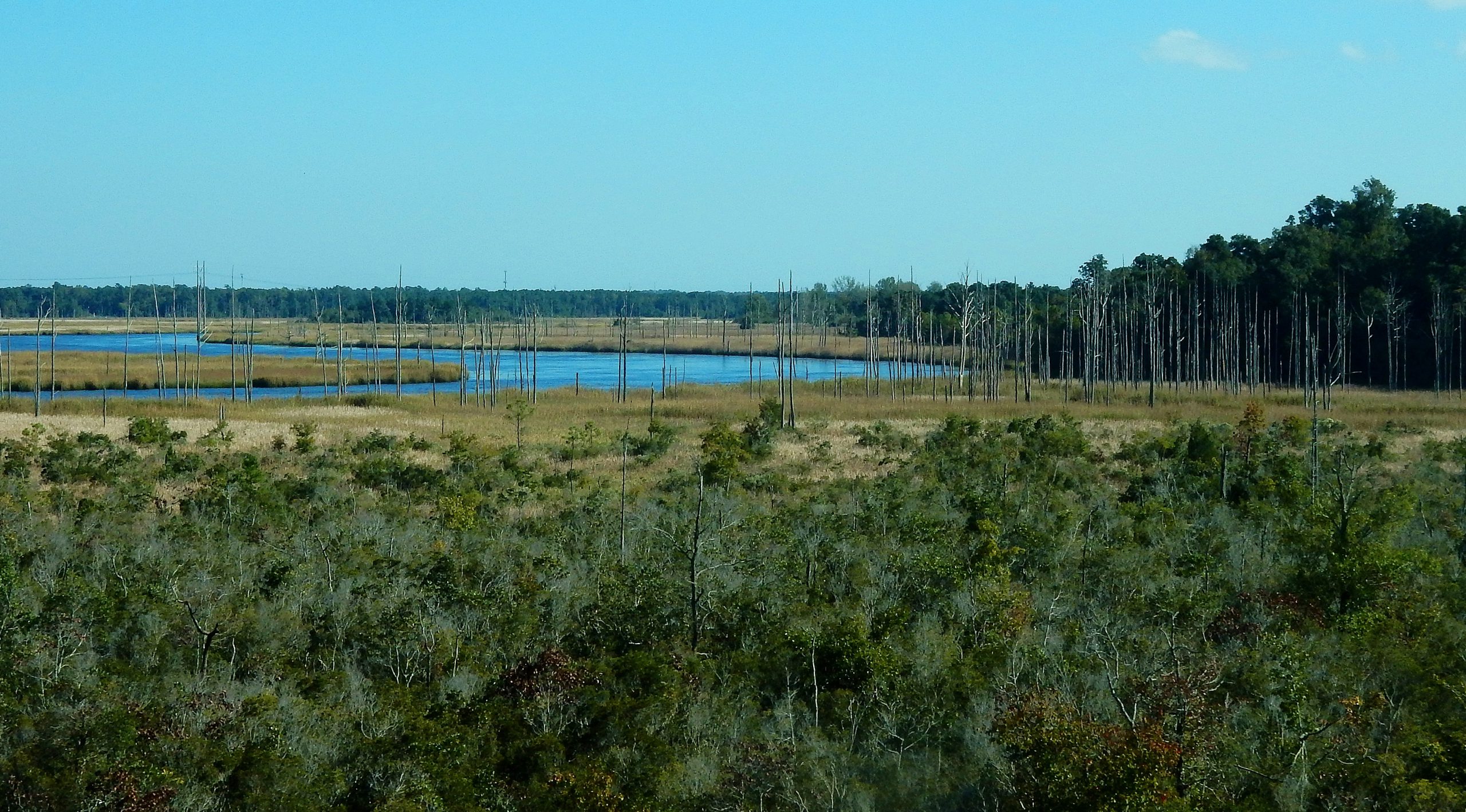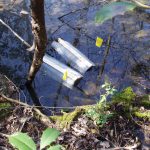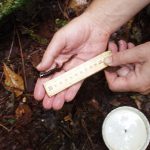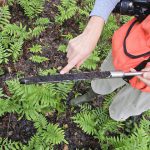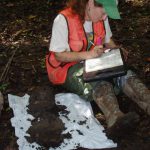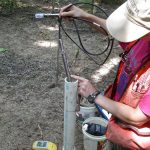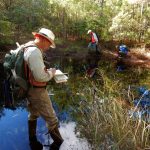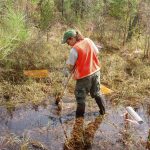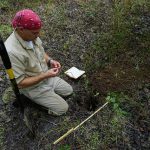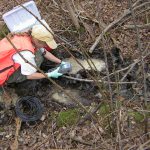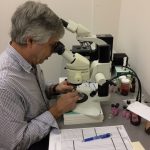Studying NC’s Wetlands
Why study North Carolina’s wetlands?
Scientists across North Carolina are studying wetlands to answer many different questions. Who and what lives here? Why is this wetland here? Where does its water come from and where does it go? How long has this wetland been here? What is around this wetland? Is this wetland in good condition?
To answer these important questions, scientists often focus on different parts of wetlands. Some look at soils, others at water, and still others at the plants and animals living there. Each question requires a different method of study, often with special tools or equipment for collecting information. Over the years, scientists at the NC Division of Water Resources have done many different studies to learn more about our wetlands here in North Carolina. Project summaries, details, and final reports are here.
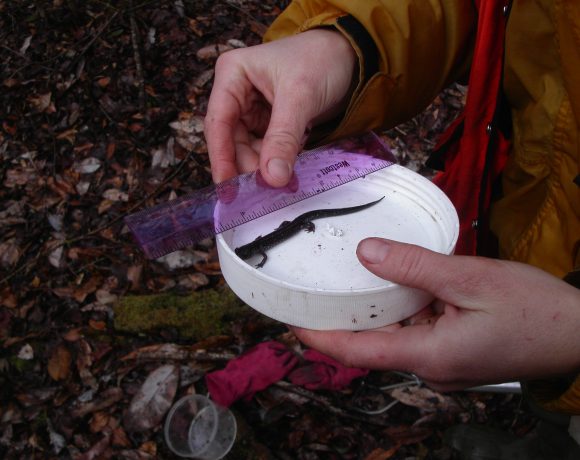
How do we study North Carolina’s wetlands?
-
Tools/Equipment
Wetland scientists use a wide variety of tools to gather data on various aspects of wetlands. When they analyze soils, they will use a soil probe to get a small core of soil, or a shovel to dig a larger pit. Scientists collecting data on animals will use specialized animal traps, rakes and hoes for looking under logs and leaf litter, dip nets for collecting bugs and tadpoles in the water, binoculars for observing birds, and field guides for assisting with identification. Botanists who record information on the plants in a wetland will carry a magnifying glass, field guides, binoculars (for treetops), and measuring tapes for recording sizes of trees. Water quality in the field is measured with special meters, and water samples are often collected in small jars and taken back to the lab for analysis. When marking off an area for study, researchers use small flags or flagging tape. Waterproof boots or hip waders are essential to a wetland scientist, and field notebooks, data sheets, or tablets are always used for recording observations. Maps, aerial photographs, and a GPS are also essential. Hats, sunscreen, and bug repellent are also very important. Sometimes big backpacks are needed for all the stuff!
-
Scientists
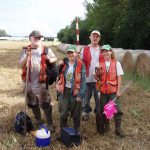 Wetland scientists have specialized training in their field of work. Most have Master’s Degrees in subjects such as wetland science, soil science, wildlife, or botany (plants). This helps prepare them to collect data, analyze data, and write reports about their findings. Their work involves collecting data in wetlands outside, and then bringing their notes and data back into an office where they enter the data into a computer. These data then help them understand patterns or trends in water levels, for example, or populations of amphibians, or how healthy their study wetlands are. Wetland scientists have to be good writers so they can communicate their results in reports, but they also frequently attend conferences and meetings where they talk about their findings.
Wetland scientists have specialized training in their field of work. Most have Master’s Degrees in subjects such as wetland science, soil science, wildlife, or botany (plants). This helps prepare them to collect data, analyze data, and write reports about their findings. Their work involves collecting data in wetlands outside, and then bringing their notes and data back into an office where they enter the data into a computer. These data then help them understand patterns or trends in water levels, for example, or populations of amphibians, or how healthy their study wetlands are. Wetland scientists have to be good writers so they can communicate their results in reports, but they also frequently attend conferences and meetings where they talk about their findings. -
Methods
When wetland scientists want to study wetlands, they first must decide what research question they need to answer and how to best do that. Next, they will search for appropriate wetland sites. Sometimes this means using a computer program to randomly choose places on a map, or sometimes this means examining information about soils, landscape features, streams, and land cover to find sites. Sometimes it means searching for a particular wetland type, like mountain bogs or salt marshes, for example. Getting permission from landowners to study their wetlands is an important step in the process.
- Field Work: Once the researchers assemble their tools and equipment and head out to a site, they frequently will begin by marking off a sampling area with flags, ropes, or marking tape. This area can be large or small, depending on what they need to collect data on. The researchers will then use special data sheets for recording information. This information may include things like names of plant species; their numbers and sizes, depth of standing water or depth to groundwater (observed by digging a pit); type, color, and texture of soils; animal species present; disturbance to the land/water; nearby land uses, etc. A scientist will use a water quality meter to measure things like dissolved oxygen, acidity, and specific conductivity (which can indicate pollution) of the water. They may also collect water samples that can later be analyzed in a water quality lab for things like metals, nutrients, sediments, etc. If a scientist has placed animal traps or coverboards, they will check and reset them, while recording species, size, and other data about the animals found. If a scientist has placed any electronic recording equipment (like camera traps or audio recorders), they will download the information onto a computer for later analysis.
- Office Work: If plant or animal samples were brought back from the field, a scientist first spends time identifying them and recording information about numbers, sizes, etc. All data that were collected in the field are brought back to an office where the researcher will enter all of the information into a computer. The numbers and types of plants and animals can then be analyzed to discover patterns. Often, wetland scientists will calculate statistics and perform statistical tests to see if the patterns are significant, or just random variation. They also frequently use the data collected in the field to calculate special index values, which indicate overall vegetation quality, species diversity, pollution sensitivity (of the aquatic bugs, for example), or disturbance level.
What have we learned by studying North Carolina’s wetlands?
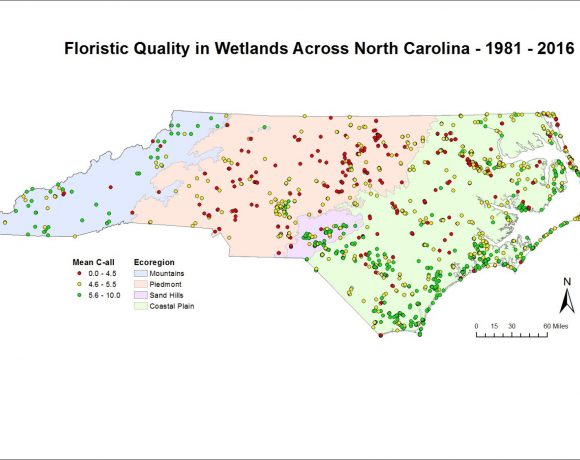
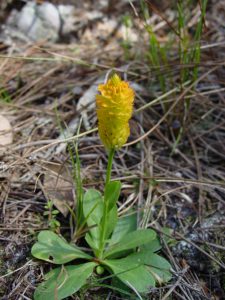 By collecting data in wetlands throughout North Carolina, and working with other partners who do the same, we have gained knowledge about the quality of our wetlands, who lives there, what water cycles they go through, and how connected they are to groundwater. We also learn about how successful we are at replacing wetlands that are lost (mitigation). Summaries of our research projects are on our Research and Data page.
By collecting data in wetlands throughout North Carolina, and working with other partners who do the same, we have gained knowledge about the quality of our wetlands, who lives there, what water cycles they go through, and how connected they are to groundwater. We also learn about how successful we are at replacing wetlands that are lost (mitigation). Summaries of our research projects are on our Research and Data page.
Participatory Science (“Citizen Science”)
You don’t have to be a wetland scientist to collect important data! Many scientists around the world are using interested non-scientists to help collect data. Researchers use these valuable data to understand what is happening in much larger areas than they could sample themselves. Helping out in a participatory science project is an exciting way to be involved in collecting data that scientists really use! Visit our Participatory Science Opportunities page for a list of projects you can help with in North Carolina.
“Citizen science is a form of open collaboration where members of the public participate in the scientific process to address real-world problems in ways that include identifying research questions, collecting and analyzing data, interpreting results, making new discoveries, developing technologies and applications, and solving complex problems.” Source: The Federal Community of Practice on Crowdsourcing and Citizen Science.

